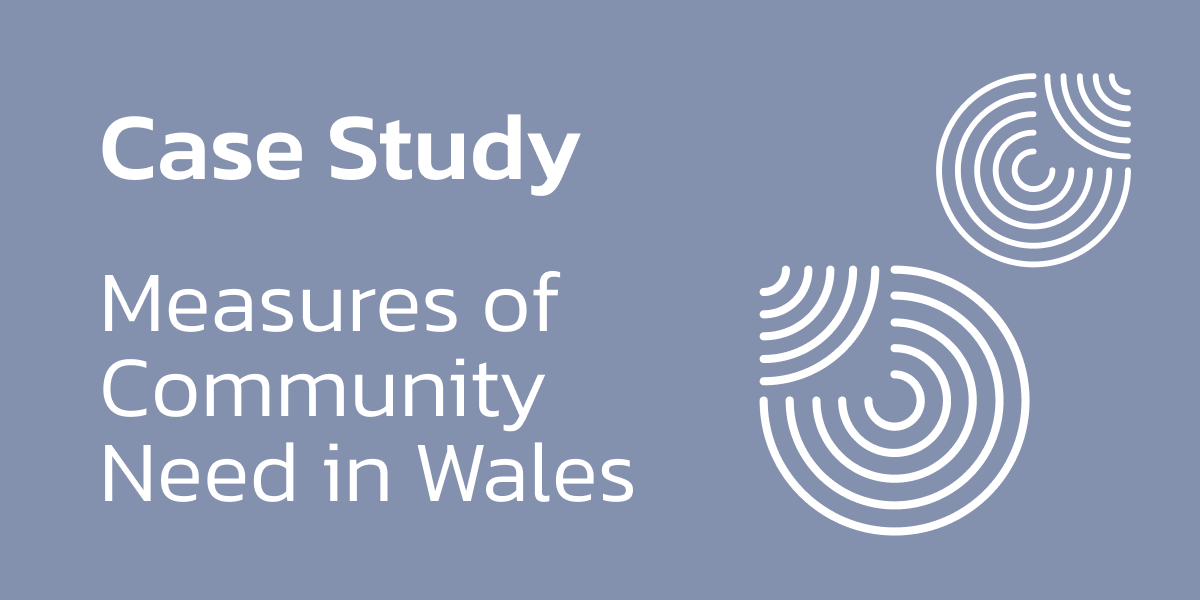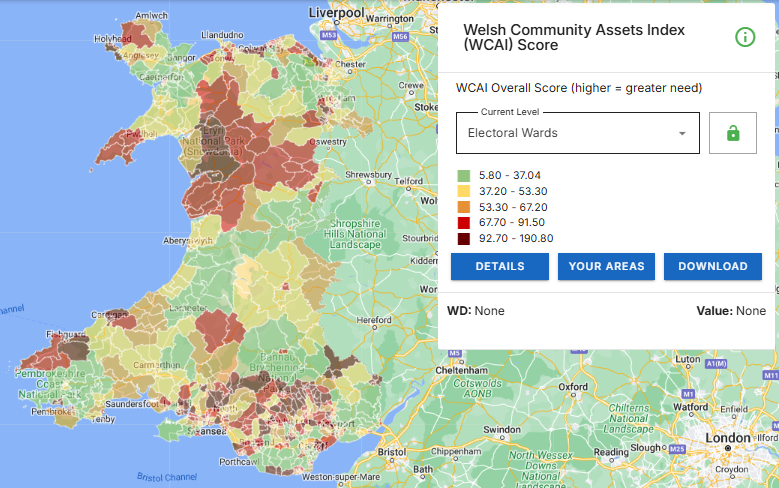
In Wales many areas face dual challenges, lacking accessible local assets like community centres and civic spaces, and facing high levels of deprivation.
In response to these challenges, Building Communities Trust (BCT) set out to explore place-based inequalities and map the areas facing the highest need. To do this, they commissioned OCSI to research, map and rank the strength of community infrastructure across Wales.
Together, we created two measures, the Welsh Community Assets Index (WCAI) and the Welsh Community Resilience Index (WCRI), that reveal that those facing the greatest economic hardship also have the fewest community resources to support them.
These measures have since been used to target local community organisations as part of a £1.6m funding programme and have informed work by Children in Need.
The WCAI builds on our earlier research in England to map social infrastructure – the Community Needs Index (CNI). Using a similar methodological approach, the WCAI identifies areas in Wales with a low number of civic and social assets – including community centres, charities, public spaces and local services. This helps to highlight where communities face challenges in engagement, connectivity and economic opportunity.
The WCAI assesses communities across three key domains:

The Welsh Community Assets Index displayed at Electoral Ward level.
The Welsh Community Resilience Index (WCRI) adds to the WCAI, combining it with the Welsh Index of Multiple Deprivation (WIMD) – Wales’ official measure of poverty and disadvantage.
Areas scoring highest for need on the WCRI are categorised as Less Resilient Areas – where communities are particularly vulnerable due to limited access to services, weak civic infrastructure and economic hardship.
In 2024, BCT launched the Community Anchor Development Programme, using the WCAI and WCRI to identify and prioritise organisations within these ‘Less Resilient Areas’.
This initiative led to 11 community organisations across Wales receiving £150,000 of flexible funding each, allowing them to determine how best to use the money themselves.
Since funding began, the Community Anchor Development Programme has led to:
You can find the full list of organisations who have received funding as part of the Community Anchor Development Programme on the BCT website.
Besides structuring the funding programme based on the findings of the research, BCT has briefed Welsh government officials on the WCAI and WCRI, and have since seen it referenced and cited by several elected members in the Senedd.
The work has also been presented to a nationwide Funders’ Forum, and at various academic conferences, and will continue to inform the conversation around the areas facing deprivation in Wales.
As policymakers, funders and organisations explore ways to support communities across Wales, these measures can guide decision-making. By understanding where challenges are, this research can help ensure that support reaches the areas where it can have the greatest impact.
The WCAI and WCRI datasets, along with detailed findings, are available on the BCT website for further exploration.
For more information on the methodology, read the technical methodology paper.
We’ve also added the datasets to Local Insight, allowing exploration of the WCAI and WCRI at a small area level. If you’re interested in learning more, you can book a demo with us, and receive a two-week free trial of the platform.
A new need for deeper place-based insight When Arts Council England launched…
More
The 2025 Index of Multiple Deprivation (IMD) provides an updated view of…
More
The English Indices of Deprivation 2025 (IoD 2025) have now been published…
More